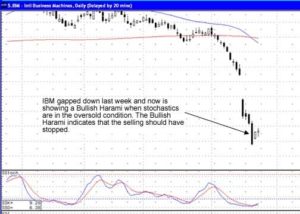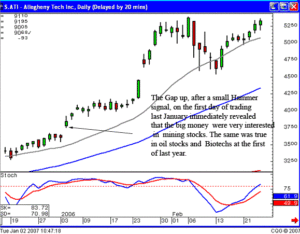Market value is a term that is used frequently in the financial world and Wall Street news. This is a snapshot of the overall value of a company. To figure market value, you multiply the number of outstanding shares the company has by the price per share. For example, a company that has 10 million shares of stock and their price is $10 per share, the market value of the company is $100 million.
How big is big?
Large capitalization companies, or large cap stocks as they are known, are by far the biggest players in the stock market. “How big”, you ask? A market value of $5 billion generally qualifies a company for large cap stock status. At the top end are companies like Wal-Mart with $197 billion, Microsoft with $291 billion and ExxonMobil leads the way at $419 billion. If you look at the entire group of large cap stocks, they account for 72% of the entire market, showing exactly how dominant these companies really are!
Large cap stocks also have a huge role in pushing the economy, and in turn they garner much attention. The two best known market indexes, the Dow Jones Industrial Average and the Standard & Poor’s 500, are both made up of large-cap stocks.
The impact of large-cap stocks on the economy
Why are these large cap stocks so important? Each one of these companies is like a huge ocean liner; even in rough waters a large ship is hard to capsize. The same is true for these companies; what they lack in speed they make up in size. Classic blue chip stocks have a continuous flow of revenue, steady earnings and consistent dividends. Since they are so large, they tend to be unaffected by rough economic times. These large cap stocks appear in so many stock portfolios because they are stabilizing, defensive investments, neither growing too rapidly nor falling too dramatically based on the stock market news reports of the day.
Non-traditional and Pseudo Large Cap Stocks
The 1990’s unleashed a new phenomenon on the stock market. Companies were achieving large cap stock status at incredible rates, some even before they actually earned it. While companies like Microsoft and Intel exploded onto the scene other companies kind of snuck in; at one time Price line was valued at more than $23 billion before it came tumbling down like other Internet stocks. At the start of 2007, Price line had a market value of around $1.6 billion.
The large cap stock lesson of the 1990’s is that while some of these non-traditional large cap stocks were able to actually reach and maintain their status, the pseudo large cap stocks we exposed as over-valued small cap stocks or mid-caps. As with most stock market movers, these companies found there true position as their market values were truly determined.
Large cap stocks and their risk vs. reward
Large cap stocks tend to resist being viewed as speculative stocks; in fact many of them are considered perfect for defensive investing because of their immense size, their history of consistency and tendency to pay dividends. They do experience their ups and downs, but large cap stocks are not normally victims of the of the stock volatility that their smaller siblings experience.
Role of large-cap stock in a stock portfolio
Because they bring so many positives to the table, large-cap stocks are a valuable part of any portfolio diversification. These stocks provide stability and long-term protection. Although they are not usually big gainers, large-cap stocks can provide the portfolio stability so that investors can add other speculative stocks for their increased earnings potential. Large-cap stocks can give any investor the security of running with the big dogs!


